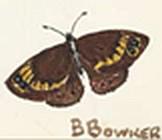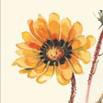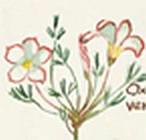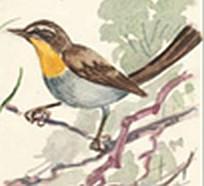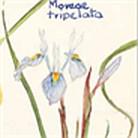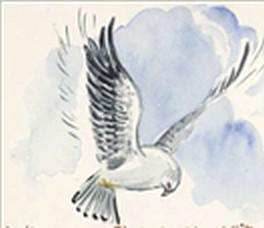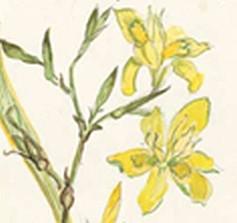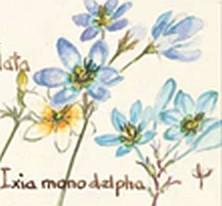Resources
Citizen Science
Citizen science is the involvement of the public in scientific research – whether community-driven research or global investigations.
The citizen science platform, iNaturalist, can be used both as an information resource as well as a source of expert IDs for plants, animals and other wildlife you have photographed. iNaturalist can be accessed online via desktop or via their cellphone app. More information can be found here: https://www.inaturalist.org
If you would like to find out about the Red List status and conservation threats of any plant you may have encountered, then the South African National Biodiversity Institute (SANBI) has a fully searchable, free online database comprising the country’s entire flora. Access the Red List of South African Plants here: http://redlist.sanbi.org
Books & Field Guides
There are a number of books and field guides that can be used to learn about and help identify flora and fauna you may encounter in the Cape Flats Sand Fynbos of Rondebosch Common and beyond.
Rondebosch Common, The Friends of Rondebosch Common (2008), Sibanye Print Solutions, Cape Town, South Africa. [For more info]
Field Guide to Fynbos, Manning, J. (New edition 2018), Struik Nature, Cape Town, South Africa.
Plants of the Greater Cape Floristic Region 1: The Core Cape Flora, Manning, J. Goldblatt, P. (2012), Strelitzia 29, South African National Biodiversity Institute, Pretoria, South Africa.
Table Mountain: A Natural History, Pauw, A. Johnson, S. (2002), Fernwood Press, Cape Town, South Africa.
Wild Flowers of Table Mountain National Park, Trinder-Smith, T. (2006), Botanical Society of South Africa, Cape Town, South Africa.
Note: This book is based on the classic book, Wild Flowers of the Cape Peninsula (1950), by Mary Maytham-Kidd that many FRC members used as a primary reference.
eBooks
South Africa’s national vegetation map and associated vegetation descriptions can now be downloaded free as a PDF.
The vegetation description for Cape Flats Sand Fynbos can be found on pp. 139-140: https://www.researchgate.net/publication/287992846_The_vegetation_of_South_Africa_Lesotho_and_Swaziland
The Vegetation of South Africa, Lesotho and Swaziland, Mucina, L. Rutherford, M.C. (2006), Strelitzia 19, South African National Biodiversity Institute, Pretoria, South Africa.
Popular Articles & Factsheets
Trimble, M. (2020) Cape Town’s Critically Endangered Cape Flats Sand Fynbos, International League of Conservation Photographers
Cape Flats Sand Fynbos Factsheet (City of Cape Town)
Postgraduate Theses
Hall, A.S.W. (2018) Restoration Potential of Alien Invaded Lowland Fynbos, Unpublished PhD thesis, Stellenbosch University
Mostert, E. (2016) Identifying Priority Areas for Active Restoration after Alien Plant Clearing in the City of Cape Town, Unpublished Master’s thesis, Stellenbosch University.
Journal Articles
Hall, S.A. Holmes, P.M. Gaertner, M. Esler, K.J. (2021) ‘Active seed sowing can overcome constraints to passive restoration of a critically endangered vegetation type’, South African Journal of Botany (Volume 138): pp. 249-261.
Hitchcock, A. Rebelo, A.G. (2017) ‘The restoration of Erica verticillata: A case study in species restoration and implications for the Cape Flora’, Sibbaldia (Volume 15): pp. 39-63.
Hitchcock, A. Williams, J. Cowell, C. (2020) ‘Lessons learnt as Erica turgida is returned’, Journal for Nature Conservation (Volume 56): pp. 1-7.
Holmes, P.M. (2008) ‘Optimal ground preparation treatments for restoring lowland Sand Fynbos vegetation on old fields’, South African Journal of Botany (Volume 74): pp. 33-40.
Krupek, A. Gaertner, M. Holmes, P.M. Esler, K.J. (2016) ‘Assessment of post-burn removal methods for Acacia saligna in Cape Flats Sand Fynbos’, South African Journal of Botany (Volume 105): pp. 211-217.
Rebelo, A.G. Holmes, P.M. Dorse, C. Wood, J. (2011) ‘Impacts of urbanisation in a biodiversity hotspot: Conservation challenges in Metropolitan Cape Town’, South African Journal of Botany (Volume 77): pp. 20-35.
